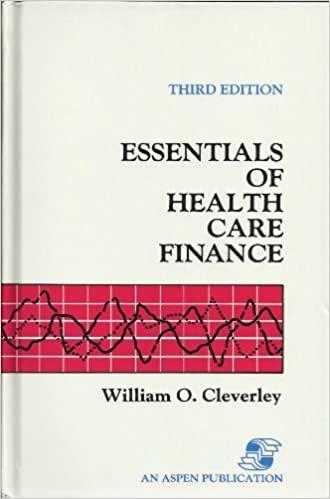if it's false , explain why

if it's false , explain why

True or false; 1) A non-interest bearing checking account is still considered an investment. . 2) Land and buildings are examples of real property investments. 3) Since 1900, the average return on stocks has exceeded the average return on savings accounts by more than 6 percentage points. 4) A United States Savings Bond is an example of an investment as defined in the text. 5) Most sources of investment information are in print format, expensive, and difficult to access. 1.2 Learning Goal 2 True or false: 1) Institutional investors manage money for businesses and nonprofit organizations, but not for individuals. 2) Institutional investors are individuals who invest indirectly through financial institutions. 3) Banks and insurance companies are examples of institutional investors. 4) In the financial markets, individuals are net demanders of funds. 1.3 Learning Goal 3 True or false; 1) Bond investors lend their money for a fixed period of time and receive interest. 2) A collection of securities designed to meet an investment goal is called a portfolio 3) If the value of a common stock increases the value of an option to buy that stock should also increase. 4) An option to purchase common stock is a type of derivative security. 5) Bonds represent a lower level of risk than do stocks in the same company. 6) Exchange traded funds are similar to mutual funds, but are traded like stocks. 7) Mutual funds invest in diversified portfolios of securities. 8) Bond prices rise as interest rates decline. 9) Bond interest and stock dividends are different ways of distributing a corporation's earnings to its owners. 1.4 Learning Goal4 True or false: 1) Earning a high rate of return with little or no risk is a realistic investment goal. 2) Under current tax laws, most taxpayers will pay a lower tax rate on capital gains than on dividends. 3) Under current tax laws, most taxpayers will pay a lower tax rate on capital gains than on income from wages. 4) Investors can postpone or avoid income taxes by investing through Individual Retirement Accounts. 5) Short-term capital gains are taxed at the taxpayer's marginal tax rate. 6) To qualify for long-term capital gains rates, a stock must be held for at least 12 months. 7) Retirement plans, such as a 401(k), allow employees to defer taxes on the plan contributions until such time as the funds are withdrawn from the retirement plan. 8) You should spend money on housing, clothing and basic insurance before investing. 1.5 Learning Goal 5 True or false; 1) U.S. Treasury Bills mature in 1 year or less. 2) Liquidity is the ability to convert an investment into cash quickly with little or no loss of value. 3) Short-term investments generally provide liquidity, safety, and a high rate of return. 4) Money market accounts, certificates of deposit, bonds and commercial paper are all forms of short-term investment vehicles. 1.6 Learning Goal 6 True or false: 1) Certified Financial Planners typically manage institutional portfolios. 2) A major goal of corporate financial management is to increase the value of the firm to investors. 3) Stringent regulations and vigorous enforcement have all but eliminated unethical behavior by financial professionals in recent years. 4) Insurance companies invest the premiums and fees collected from customers in order to neutralize the risks assumed from their clients. 5) Chartered Financial Analyst (CFA) is a degree offered by several prestigious business schools














